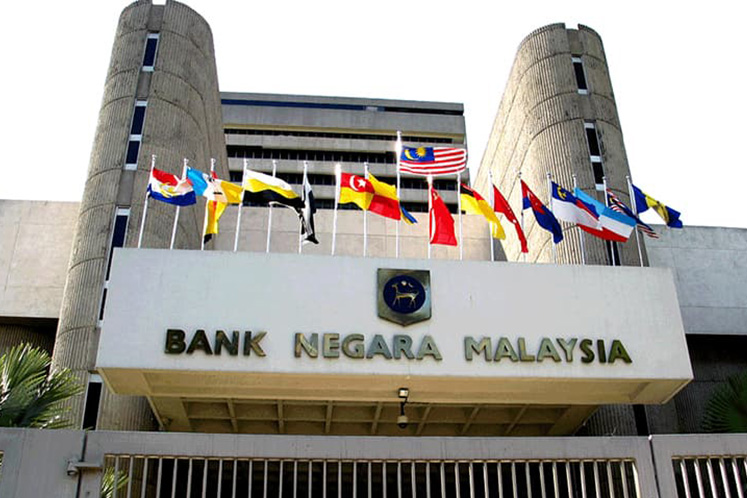
Published by Malay Mail, The Malaysian Insight & Malaysiakini, image from The Star.
Looking forward, the outlook on student loan repayment in Malaysia is likely to get bleaker given what has happened after the rise of Covid-19 followed by the movement control order (MCO).
The uncertainty in the economic environment has caused unemployment and reduced job opportunities for the youngsters especially those in the lower-income category (B40 group) who represent a share of the borrowers from the federal loan institution, National Higher Education Fund Corporation (PTPTN).
Of the total, on average borrowers from the B40 category accounts for 55 per cent, Middle 40 (M40) group makes up 38 per cent while the Top 20 group (T20) makes up only about 7 per cent.
Since its establishment, more than three million students have benefited from PTPTN loans with total loan disbursement worth RM56 billion.
Nevertheless, despite the increasing loan disbursement that has helped the borrowers to get access to higher education, higher costs have resulted in students not repaying their loans.
Based on a study done by PTPTN in 2019, it was found that nearly all borrowers in B40 category have not been repaying their loans. Of the total respondents, 87.7 per cent earn RM4,000 and below per month after graduation. Furthermore, 97 per cent of loan defaulters come from the B40 group.
Then, many will wonder why would the borrowers default their loan repayments?
According to the same study, the reasons are as follows:
- No regular income (29.1 per cent);
- Insufficient income (28.8 per cent);
- Other commitments are too high (28.3 per cent);
- Political protest (8 per cent);
- Other reasons (4.8 per cent); and
- Weak enforcement by PTPTN (1 per cent).
Several similarities were also found in PTPTN’s 2015 study in which five key factors that led to borrowers not repaying their loans are inadequate income, uncertain unemployment status, high living costs, high administrative costs as well as mismatch between employment and qualifications.
According to PTPTN Public Consultation Paper last year, 51 per cent are loan defaulters — 32 per cent have been paying inconsistently (616,000 borrowers) while 19 per cent (356,000 borrowers) have never paid even once.
In addition to the current figures for loan repayments, the statistics of unemployment among the graduates appear not very helpful. Despite overall unemployment rate remaining stable at 3.9 per cent in 2019, the unemployment rate among youth aged 24 and below stays in double digit at 17.2 per cent (17.5 per cent in 2018).
Anecdotally, given that the degree-level students generally would graduate at the age of between 22 to 24, the unemployment rate data raise a big question to the well-being of future student loan repayments.
Based on the Employment Insurance System (EIS) unemployment benefit claims, there is a total of 62,247 employment losses as of the third week of July. Of the total, those aged 25-29 are likely to be laid off, accounting for 20 per cent of the loss in employment (12,464 persons).
Although the deferment of PTPTN loan repayment for a total of six months until end-September provides a short-term relief to the borrowers, the clock is ticking by the day and we are already approaching the month of August.
What’s left after September to help borrowers with their loan repayments? At the same time, the borrowers might happen to have other commitments considering that bank loan moratoriums will also end in September.
Indeed, these financial burdens have been causing anxiety amongst the rakyat, and it’s one of the recurring themes raised by participants in the focus group discussion of EMIR Research for its next quarterly poll.
This will also likely contribute negatively to our National Worry Index which is already in the maximum worry level at 0.78 based on EMIR Research’s previous quarterly poll.
Therefore, the only way to help the borrowers in trying to fulfil their study loan obligations is by addressing the factors which have hindered them from repaying particularly with regards to individuals’ incomes.
Firstly, the stimulus measures announced by the government in the short-term recovery plan (Penjana) such as the hiring incentives for the unemployed and the extension of Wage Subsidy Programme (WSP) should be considered as some of the positive moves to support rakyat in terms of income.
Secondly, an employment-search initiative by PTPTN and Social Security Organisation (Socso) known as Virtual Mini Job Hunt which took place from June 30 until July 3 was also a good move to provide a platform for over 4,000 PTPTN borrowers who have graduated to search for jobs.
This initiative should be continued and constant monitoring on the effectiveness should be done.
Since the gloomy economic environment has taken a toll on the employment opportunities, perhaps another round of deferment would provide a huge relief for the borrowers while searching for jobs.
However, the extension should be targeted only towards those who face severe loss in incomes or specifically those who are in the B40 category (≤ RM4,849) while those who are above the income threshold should be reminded to continue or start repaying.
This is to ensure the sustainability of PTPTN funds for the benefit of future generations. As of the current stated figure, the institution is in debt of RM40 billion in principal with an additional RM13 billion in interest, said the chairman Wan Saiful Wan Jan.
Although this issue is not hotly debated for now, it needs to be urgently addressed as what’s ahead is the most crucial time. Prolonging the deferment should not be a sustainable solution with the absence of job creation as it will worsen PTPTN’s financial condition thus affecting the future generations’ access to higher education.
Nur Sofea Hasmira Azahar is Research Analyst at EMIR Research, an independent think tank focused on strategic policy recommendations based on rigorous research.

